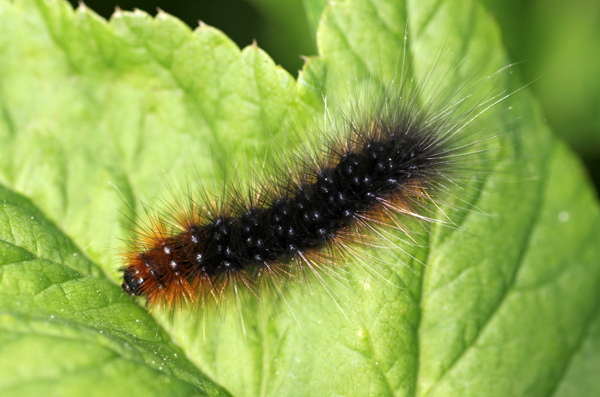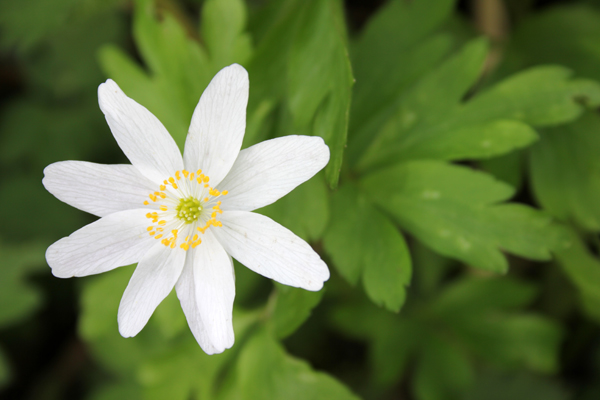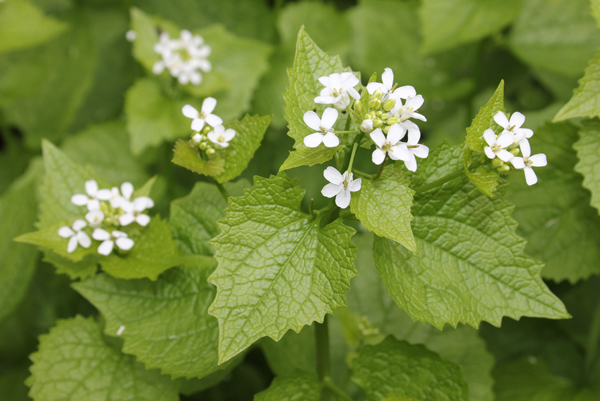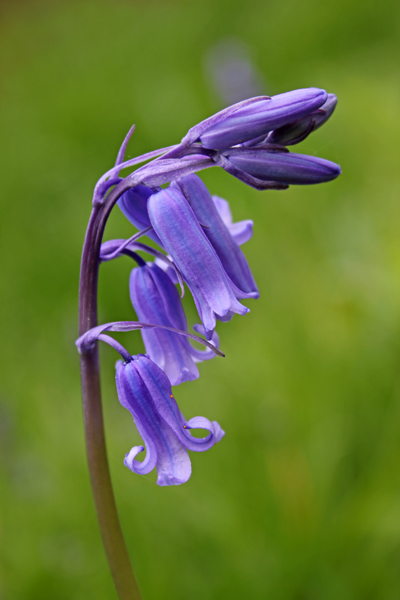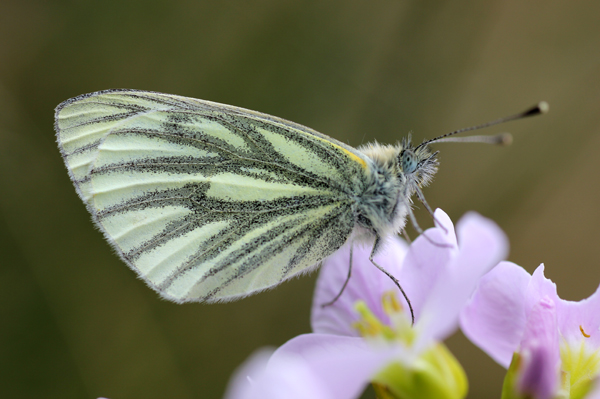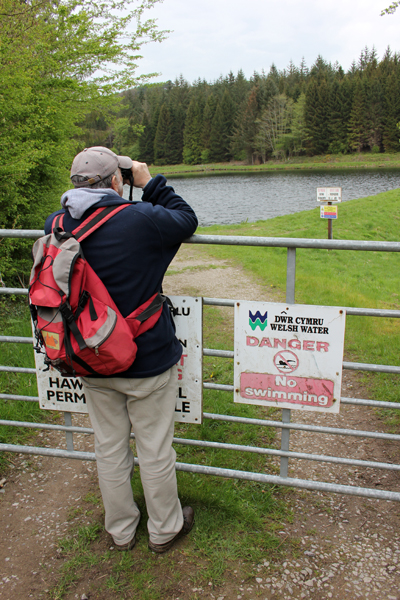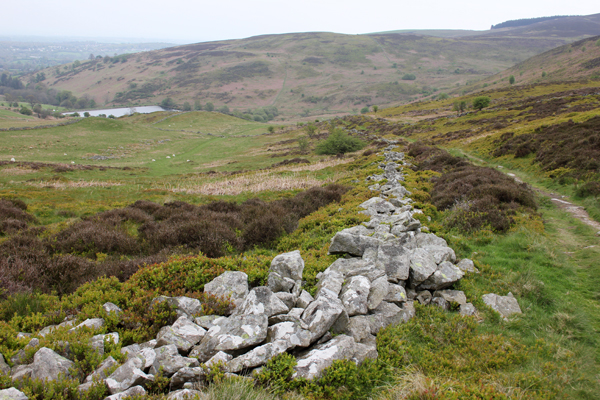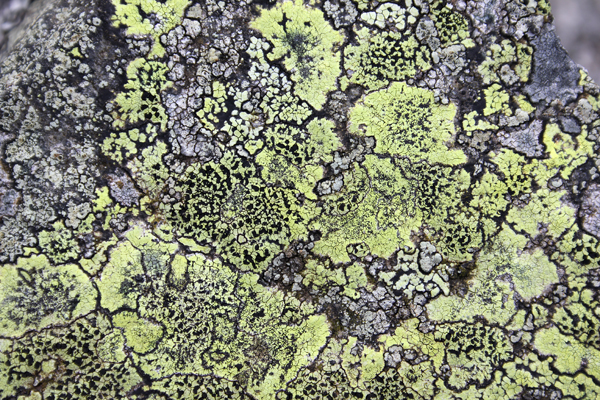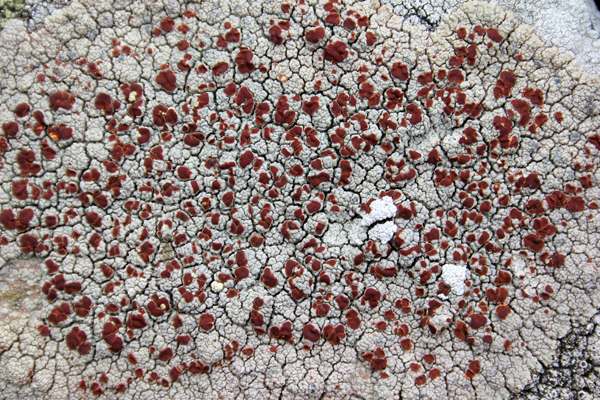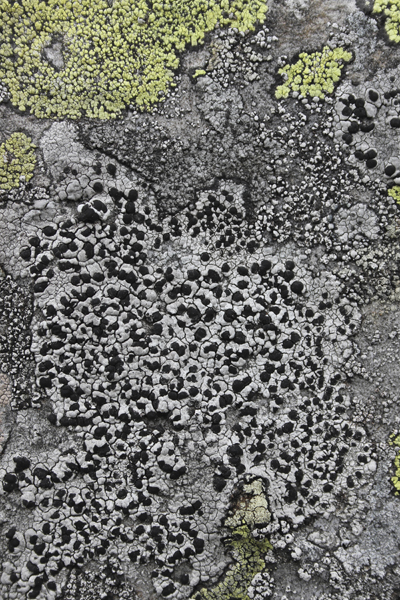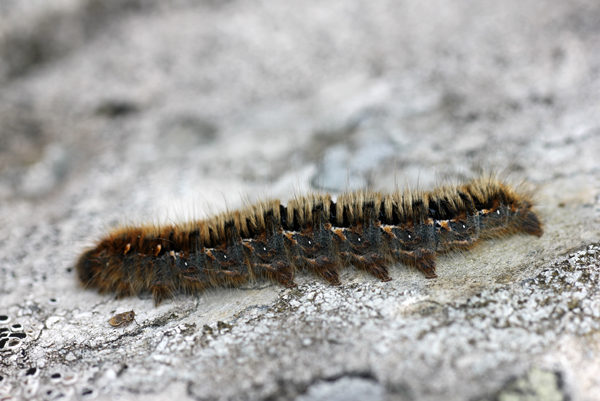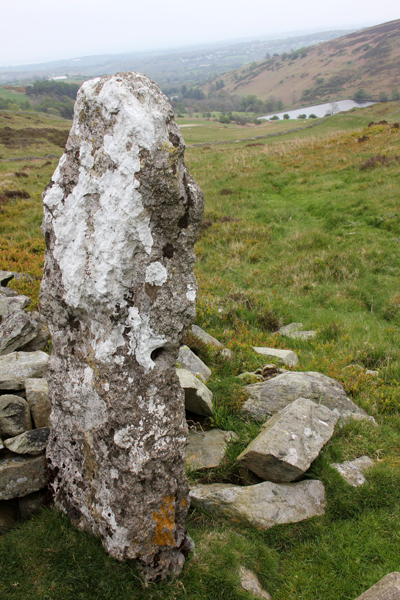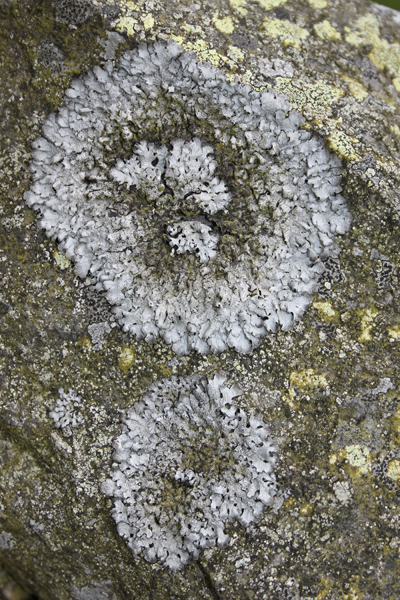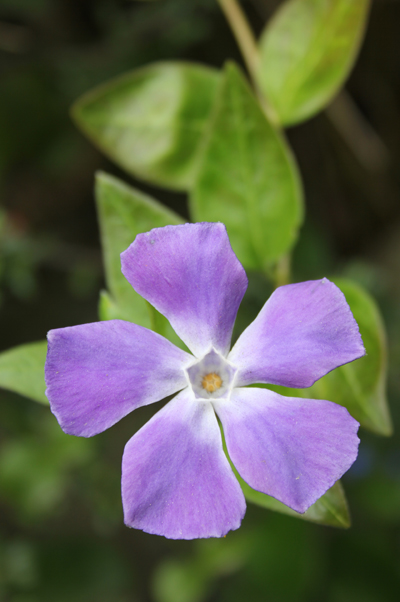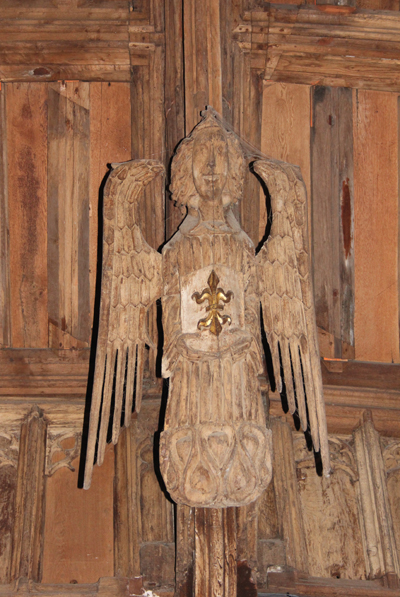Richard Surman, DaveB and I headed out to Cilcain near Mold in Flinshire, North Wales for the day. We turned off the A494 onto a single track lane beside the entrance to Loggerheads CP and continued a few miles into the village noting a Jay and a couple of Grey Wagtails en route. Warbler birdsong greeted us with a Garden Warbler, Blackcap, Willow Warbler and Chiffchaff along with three vocal Ravens and chacking Jackdaws. After only a few yards I spotted a hairy black caterpillar with orange underside – a Garden Tiger Arctia caja.
Garden Tiger
The tree shaded lane edges held a mass of wildflowers with Wood Anemone Anemone nemorosa,Lesser Celandine Ranunculus ficaria, Greater Stitchwort Stellaria holostea, Garlic Mustard Alliaria petiolata, Dog’s Mercury Mercurialis perennis, Wood-sorrel Oxalis acetosella, Herb-Robert Geranium robertianum, White Dead-nettle Lamium album, Cleavers Galium aparine, Crosswort Cruciata laevipes, Greater Burdock Arctium lappa, Lords-and-Ladies Arum maculatum and English Bluebell Hyacinthoides non-scripta.
Wood Anemone
Garlic Mustard
Bluebells
Long-tailed, Blue & Great Tit, Robin, Blackbird, Song Thrush, Chaffinch and Bullfinch were soon added to the list. As we were peering over the edge of a gate to the woodland below – an area where Redstarts have been noted in the past a lady invited us in – the track led down the slope to a small community garden where they grow veg. A hyperactive Spaniel was rushing to and fro as some of the volunteers wheel-barrowed compost from the heap. I found a few fungi with Jelly Ear Auricularia auricula-judae, Blushing Bracket Daedaleopsis confragosa and a lone King Alfred’s Cakes Daldinia concentrica. It had turned cloudy – a Green-veined White Pieris napi rested and fed on a Cuckooflower Cardamine pratensis with Common Dog-violet Viola riviniana – including a pinkish tinged form close by.
Green-veined White
We briefly watched a Spotted Flycatcher and a Willow Warbler posing as a Spotted Fly had us hallucinating for a while. A Redstart was teasing us with bursts of song from amongst the woodland, remaining unseen. We returned to the lane and continued past the first of the small fishing lakes.
Comments from Richard and DaveB that this is where they usually see Great Spotted Woodpecker and Nuthatch proved correct with them appearing on cue – the latter checking out a potentially suitable nest-hole. A Yellowhammer sung it’s ‘little bit of bread and no cheese’ song from the flowering European Gorse Ulex europaeus. Woodpigeon and Goldfinch were noted before we began slowly climbing past further fishing lakes up onto the moor. Plenty of flowering Bilberry Vaccinium myrtillus looking slightly more ragged with brown-edged leaves compared to the fresh green growth we’d seen at White Coppice last weekend. Amazing to see yet more Wood-sorrel growing along the track in this exposed environment along with a few flowers of Tormentil Potentilla erecta and Common Eyebright Euphrasia officinalis. Opposite-leaved Golden-saxifrage Chrysosplenium oppositifolium was noted growing along the edge of a stream and in a large puddle was Round-leaved Crowfoot Ranunculus omiophyllus.
A Swallow whizzed overhead. A Cuckoo was persistently calling – the valley’s shape amplifying the volume, yet more Ravens were circling and calling their name and Pheasants were trying to outdo each other with their calls. A Tree Pipit was seen performing a more lack lustre parachute display flight down to a bush than the Meadow Pipits who sailed much higher and sang heartily as they descended to the moor. A few Whitethroats were singing their scratchy notes from a scattering of bushes on the moor – it was pondered why these males thought they would attract a mate in this exposed landscape than in more lush settings further down the valley? A few Willow Warblers also seemed to like this area as did a distant Whinchat and a scattering of Linnets.
We found a soft patch of ground to stop for lunch whilst listening to the Cuckoo. The stone walls and gate posts were covered in a huge variety of lichens with Map Lichen Rhizocarpon geographicum and R. reductum and R. oederi. Verrucaria nigrescens and countless others. One particularly noticeable variety, which is locally common on base-poor rocks in upland areas, was Ophioparma ventosa. It had abundant blood-red apothecia on a thick, warted, yellow-grey crusty thallus (f. ventosa) another form has a pale grey grey crusty thallus (f. subfestiva, lacking usnic acid). There was also Fuscidea kochiana which has an almost white thallus, cracked areolate; apothecia black, irregularly angular, set in the thallus and often occurs with Rhizocarpon geographicum.
Map Lichen
Lichen Ophioparma ventosa f. ventosa
Fuscidea kochiana
An Oak Eggar Lasiocampa quercus caterpillar camouflaged well with the lichen. A lone Mountain Bumblebee Bombus monticola with distinctive orange bottom flew by and a handful of Buff-tailed Bumblebees Bombus terrestris were noted.
Oak Eggar Caterpillar
We continued round the other side of the valley watching a male and female Wheatear amongst the sheep and noting a singing Whinchat on the top of a mature Sycamore Tree. The Cuckoo was louder and closer now. Scanning the trees surrounding a bowl in the valley was rewarded when Richard spotted the slaty-blue male belting out its call from the tree edge with seemingly very little effort.
A Buzzard circled and a Curlew called out signalling our departure from the moor, returning to more wooded conditions and rosettes of the Lichen Parmelia saxatilis predominating on the stone walls.
Parmelia saxatilis
A Pied Wagtail was hunting for insects in a field which held a few Highland Cattle. A second Cuckoo called out from further down the valley, Chiffchaffs and Blackcaps sang away and there were snippets of song from a couple of other elusive Redstarts. A few insects with dangly legged St. Mark’s Fly Bibio marci, Common Carder Bee Bombus pascuorum, Honey Bee Apis mellifera and Hoverfly Syrphus ribesii.Nettle Rust Puccinia urticata was noted on Stinging Nettle Urtica dioica and Dock Rust Puccinia phragmitis on Broad-leaved Dock Rumex obtusifolius.
A Magpie and a dozen or so Rooks from the Rookery of 40-45 nests were added to the list. As we continued back down through the village we added Mistle Thrush, Collared Dove, House Sparrow and saw a couple more Swallows. The high verges of the lane were bursting with more wildflowers – Buttercup Ranunculus sp. Greater Celandine Chelidonium majus, Red Campion Silene dioica, Sheep’s Sorrel Rumex acetosella, Primrose Primula vulgaris, Cowslip Primula veris, Black Medick Medicago lupulina, Round-leaved Crane’s-bill Geranium rotundifolium, Greater Periwinkle Vinca major, Green Alkanet Pentaglottis sempervirens, Wood Forget-me-not Myosotis sylvatica, Ground-ivy Glechoma hederacea, Red Valerian Centranthus ruber, Spanish Bluebell Hyacinthoides hispanica and Ramsons Allium ursinum.
Greater Periwinkle
A Dunnock hopped around the churchyard of St Mary’s – the interior was stunning with the wooden arched roof of the south nave decorated with angels, shields and grotesques.
Angel
The pond besides the Cilcain waste water treatment building held Marsh-marigold Calthapalustris and masses of Marsh Horsetail Equisetum palustre.
Our leisurely 6hr circular walk had flown by, some good lists for the day and all within an hour’s drive of Liverpool!

